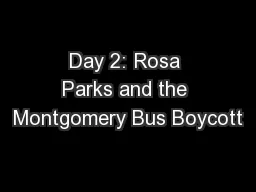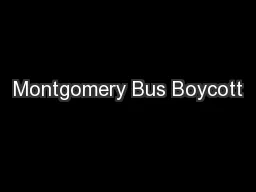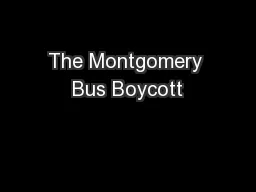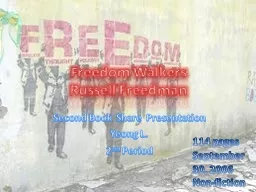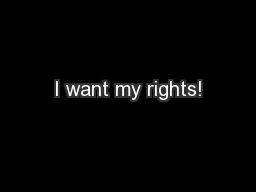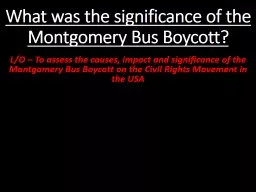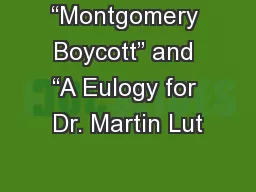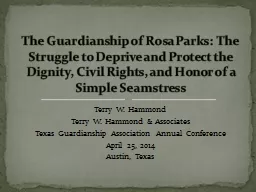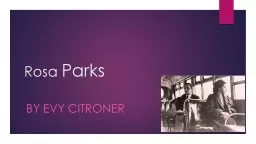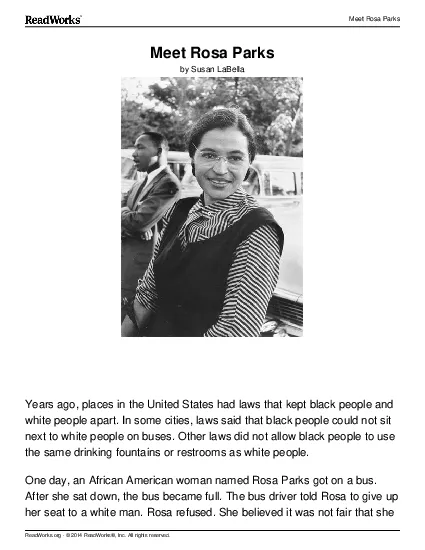PPT-Day 2: Rosa Parks and the Montgomery Bus Boycott
Author : natalia-silvester | Published Date : 2015-10-30
The Montgomery Bus Boycott Despite threats and violence the civil rights movement quickly moved beyond school desegregation to challenge segregation in other areas
Presentation Embed Code
Download Presentation
Download Presentation The PPT/PDF document "Day 2: Rosa Parks and the Montgomery Bus..." is the property of its rightful owner. Permission is granted to download and print the materials on this website for personal, non-commercial use only, and to display it on your personal computer provided you do not modify the materials and that you retain all copyright notices contained in the materials. By downloading content from our website, you accept the terms of this agreement.
Day 2: Rosa Parks and the Montgomery Bus Boycott: Transcript
Download Rules Of Document
"Day 2: Rosa Parks and the Montgomery Bus Boycott"The content belongs to its owner. You may download and print it for personal use, without modification, and keep all copyright notices. By downloading, you agree to these terms.
Related Documents

